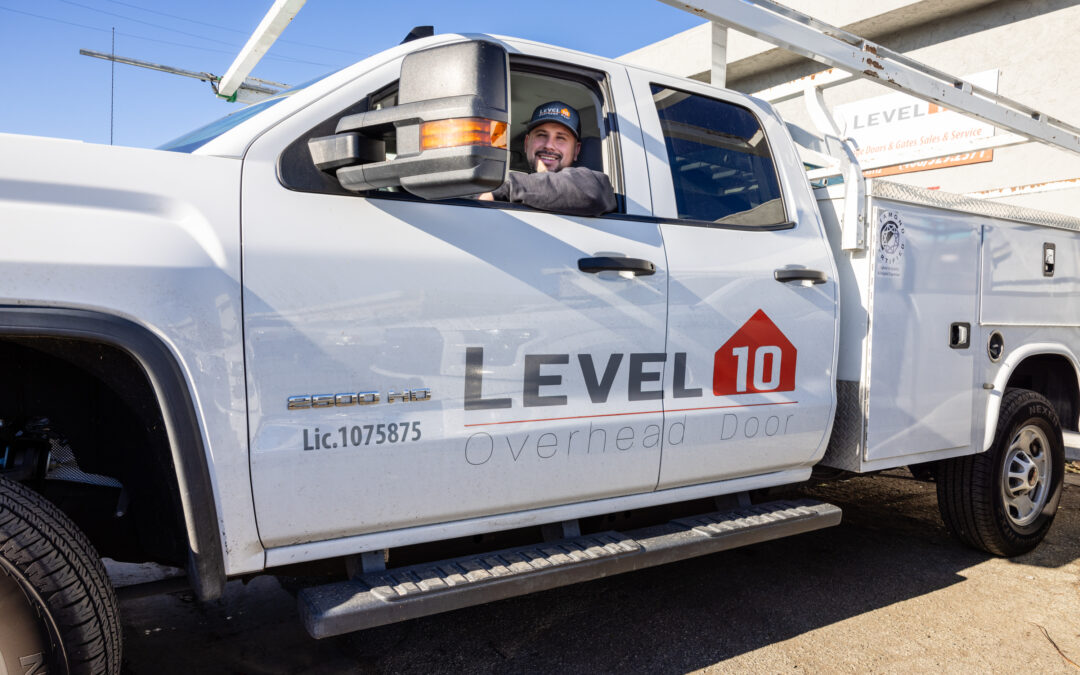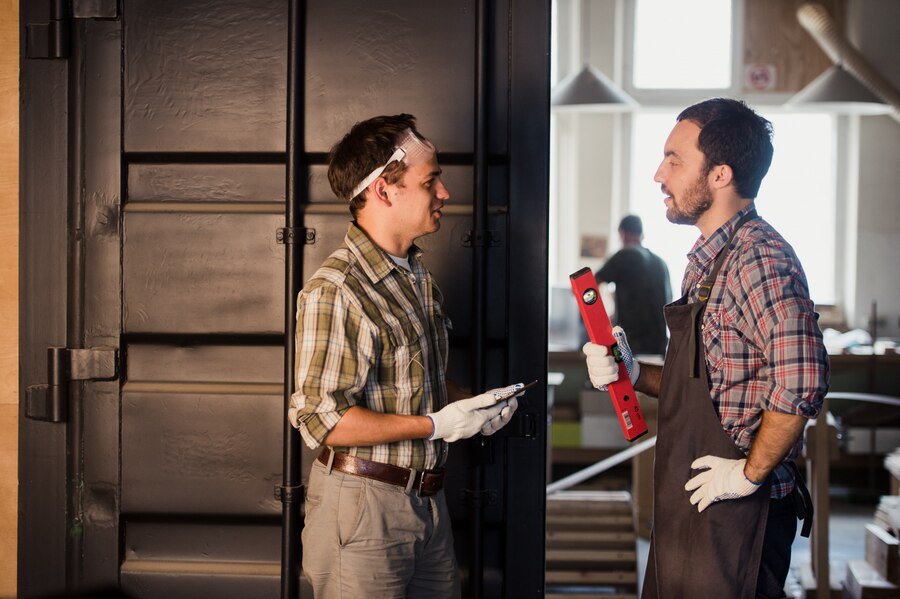How To Perform A DIY Garage Door Safety Inspection
Welcome to our latest blog post, where we delve into an essential aspect of home maintenance: performing a DIY garage door safety inspection. Your garage door is both a convenience and a crucial component of your home’s safety and security. Regular inspections ensure it operates smoothly and safely for you and your family. In this guide, we’ll walk you through step-by-step instructions on conducting a thorough safety inspection of your garage door.
From checking the hardware and mechanisms to testing the safety features, we’ll cover everything you need to know to identify and address potential issues promptly. By taking the time to perform these simple yet crucial checks, you can help prevent accidents, protect your property, and ensure the continued reliability of your garage door system.
Importance Of Safety Inspections for Garage Doors
Regular safety inspections ensure that your garage door operates safely and effectively. You can prevent accidents, injuries, and costly repairs by identifying potential hazards or malfunctions early on. A proactive approach to maintenance can provide peace of mind and protect your family and property.
- Prevent Accidents and Injuries: Garage door safety inspections help identify potential hazards such as malfunctioning sensors, worn-out cables, or damaged springs. By addressing these issues promptly, you can prevent accidents like door entrapment, falls, or injuries caused by faulty garage door operation.
- Ensure Proper Functionality: Regular inspections ensure that all garage door system components are in good working condition. This includes checking the alignment of sensors, testing the auto-reverse mechanism, and inspecting hardware for signs of wear or damage. Proper functionality is essential for safe and reliable operation.
- Extend Lifespan of Equipment: Safety inspections can help identify minor issues before they escalate into major problems, leading to costly repairs or premature replacement of garage door components. By addressing issues early and performing routine maintenance, you can extend the lifespan of your garage door system and maximize its efficiency.
Critical Components to Examine in a DIY Inspection
During a DIY inspection, focus on critical components such as springs, cables, rollers, tracks, and the opener system. These elements play a vital role in the functionality and safety of your garage door. By thoroughly examining each part, you can detect any issues requiring attention.
Assessing Hardware And Mechanical Systems
Inspect the hardware, including hinges, bolts, and screws, to ensure they are tight and secure. Check for signs of rust, corrosion, or excessive wear that may compromise the door’s structural integrity. Additionally, examine the mechanical systems, such as the opener motor and drive mechanism, for unusual noises or vibrations.
Testing The Auto-Reverse Mechanism
The auto-reverse mechanism is a critical safety feature designed to prevent the door from closing on objects or people. Test this function by placing an obstruction, such as a roll of paper towels, in the door’s path and closing it. The door should immediately reverse direction upon contact with the obstruction.
- Importance of Auto-Reverse Testing: The auto-reverse mechanism is a critical safety feature designed to prevent accidents and injuries by stopping the garage door from closing if it encounters an obstruction. Regular Testing ensures this feature functions appropriately, providing added protection for people and property.
- Testing Procedure: To test the auto-reverse mechanism, place an object, such as a roll of paper towels or a sturdy box, in the path of the closing garage door. Activate the door to close using the wall-mounted control or remote opener and observe its response.
- Observe Response: As the garage door closes and contacts the obstruction, the auto-reverse mechanism should detect the resistance and immediately reverse the door’s direction, causing it to open again. This action demonstrates that the safety feature is functioning as intended.
- Adjustments if Necessary: If the garage door fails to reverse upon contact with the obstruction, it may indicate a problem with the auto-reverse mechanism. In such cases, consult the owner’s manual for instructions on adjusting the sensitivity settings or contact a professional technician for assistance.
- Repeat Testing Regularly: It’s essential to repeat the auto-reverse Testing regularly to ensure ongoing safety and functionality. Aim to test the mechanism at least once a month to catch any issues early and address them promptly, minimizing the risk of accidents or injuries.
Checking Sensor Alignment And Functionality
Garage door sensors detect objects or obstructions in the door’s path and trigger the auto-reverse mechanism. Ensure the sensors are correctly aligned and free from dirt, debris, or obstructions that could interfere with their operation. Clean the sensors regularly to maintain optimal functionality.
 Inspecting Cables, Springs, and Rollers
Inspecting Cables, Springs, and Rollers
Inspect the cables for fraying, rust, or signs of wear, as damaged cables can pose a severe safety risk. Check the springs for any signs of stretching, corrosion, or damage. Examine the rollers for smooth operation and replace any worn or damaged rollers to prevent track misalignment and ensure proper door movement.
- Cables Inspection: Begin by visually inspecting the cables for any signs of fraying, rust, or wear. Check for loose strands or kinks in the cable, which could indicate potential failure. Additionally, ensure the cables are correctly aligned and securely attached to the garage door and the cable drums.
- Springs Examination: Inspect the springs for signs of stretching, corrosion, or damage. Look for gaps between coils or signs of wear along the surface of the spring. Pay close attention to any unusual noises or movements when operating the garage door, which may indicate spring-related issues.
- Rollers Assessment: Examine the rollers for smooth operation and signs of wear or damage. Look for cracks, chips, or flat spots on the rollers, which can affect their ability to move freely along the tracks. Lubricate the rollers regularly to ensure smooth and quiet garage door operation.
Lubrication and Maintenance Recommendations
Apply lubricant to moving parts such as hinges, rollers, tracks, and springs to reduce friction and prolong their lifespan. Follow the manufacturer’s recommendations for lubrication frequency and use a silicone-based or lithium-based lubricant for optimal results. Additionally, schedule regular maintenance checks with a professional garage door technician.
Identifying Signs of Wear or Damage
Look for signs of wear, damage, or deterioration on all garage door system components, including the door panels, tracks, hardware, and weather sealing. Common signs include rust, corrosion, dents, cracks, or sagging. Address issues promptly to prevent further damage and ensure continued safety and functionality.
- Visual Inspection: Conduct a thorough visual inspection of all components of the garage door system, including the door panels, tracks, hardware, and weather sealing. Look for signs of wear, such as rust, corrosion, dents, cracks, or peeling paint, which may indicate underlying issues that require attention.
- Listen for Unusual Sounds: Consider any unusual sounds or noises, such as grinding, squeaking, or scraping, when operating the garage door. These noises may indicate worn-out or damaged components, such as springs, rollers, or hinges, that must be inspected, repaired, or replaced.
- Check for Misalignment: Inspect the alignment of the garage door tracks and panels to ensure they are correctly aligned. Misaligned tracks or panels can cause the door to operate unevenly or become stuck, leading to premature wear and potential safety hazards. Adjust or realign the tracks as needed to ensure smooth operation.
- Test Balance and Movement: Test the balance and movement of the garage door by manually opening and closing it. A properly balanced door should open and close smoothly without excessive force or resistance. If the door feels heavy or challenging to operate, it may indicate issues with springs, cables, or rollers.
- Examine Weather Stripping: Inspect the weather stripping along the edges of the garage door for signs of wear or damage. Check for tears, gaps, or deterioration in the stripping material, which can compromise the door’s insulation and allow drafts, moisture, or pests to enter the garage. Replace damaged weather stripping promptly to maintain energy efficiency and protect the garage’s contents.
Addressing Common Safety Concerns
Common safety concerns with garage doors include broken springs, misaligned tracks, malfunctioning sensors, and worn-out hardware. Address these issues promptly to prevent accidents and injuries. Consult a garage door technician if you need help handling a safety concern.
Steps For Correcting Safety Issues
If you identify any safety issues during the inspection, immediately correct them. Depending on the severity of the issue, this may involve tightening loose hardware, replacing damaged components, adjusting sensor alignment, or scheduling professional repairs. Prioritize safety above all else to protect yourself, your family, and your property.
- Tighten Loose Hardware: Begin by inspecting all nuts, bolts, screws, and other hardware components of the garage door system. Use a wrench or screwdriver to tighten any loose fasteners securely to prevent further movement or potential hazards.
- Replace Worn-Out Components: Identify worn-out or damaged components, such as springs, cables, rollers, or hinges, that may compromise the safety and functionality of the garage door. Replace these components with new ones to ensure reliable operation and prevent accidents or injuries.
- Adjust Sensor Alignment: If the garage door sensors are misaligned or malfunctioning, adjust their position to ensure proper alignment and functionality. Clean the sensor lenses and remove any obstructions that may interfere with their operation to prevent false readings and ensure accurate detection of obstacles.
Conclusion
Conducting regular DIY garage door safety inspections is not just a maintenance task; it’s a crucial step in ensuring the safety and security of your home. By thoroughly examining key components, testing safety features, and addressing any issues promptly, you can prevent accidents, injuries, and costly repairs. Taking a proactive approach to garage door maintenance not only provides peace of mind but also extends the lifespan of your garage door system and enhances its overall performance.
Remember, safety should always be the top priority for your garage door. By dedicating a small amount of time to performing these inspections regularly, you can protect yourself, your loved ones, and your property from potential hazards and enjoy the worry-free operation of your garage door for years to come.


 Inspecting Cables, Springs, and Rollers
Inspecting Cables, Springs, and Rollers